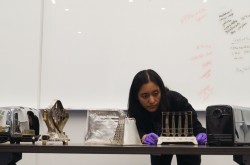The World’s First Paper from Wood – Charles Fenerty
This article was originally written and submitted as part of a Canada 150 Project, the Innovation Storybook, to crowdsource stories of Canadian innovation with partners across Canada. The content has since been migrated to Ingenium’s Channel, a digital hub featuring curated content related to science, technology and innovation.
The story goes that sometime in the 1830s, when he was a teenager in Sackville, Nova Scotia, Charles Fenerty took a walk in the woods that would make him famous. He happened to notice some wasps chewing on wood fiber and watched as they produced a fine paper-like substance that they then used to build a nest. It was a “Eureka!” moment for Fenerty who headed for home to follow their lead. He began grinding wood into pulp to make paper. Until this time, most paper had been made from rags. But as the demand for paper grew and the supply of rags dwindled, interest in alternative sources increased. Fenerty knew he was on to something when he produced paper that he described “as firm in its texture, as white, and to all appearance as durable as the common wrapping paper.” Alas, he failed to take out a patent for his process and so made no money from the discovery. Although his invention did not lead to immediate fame or fortune, Fenerty did go on to travel the world as far as Australia, to write award-winning poetry, and ultimately to return to his Nova Scotia village where he served as tax collector, overseer of the poor, farmer and lumberman. In 1987, almost 100 years after his death, Canada Post issued a stamp honouring Fenerty, inventor of the world’s first usable paper from wood.
















